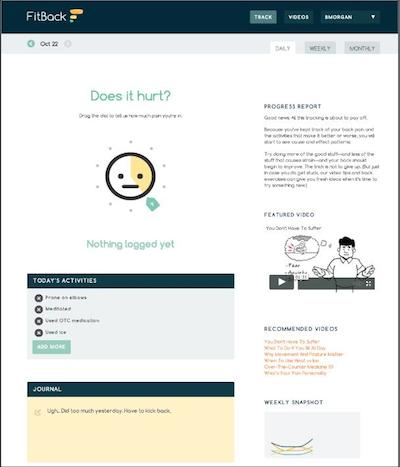 A mobile intervention, called FitBack, that personalizes health content for the user is an effective tool to help patients improve their nonspecific lower back pain (NLBP), according to a study, conducted by health app intervention developer ORCAS with help from insurance company Cigna, that was recently published in the Journal of Medical Internet Research.
A mobile intervention, called FitBack, that personalizes health content for the user is an effective tool to help patients improve their nonspecific lower back pain (NLBP), according to a study, conducted by health app intervention developer ORCAS with help from insurance company Cigna, that was recently published in the Journal of Medical Internet Research.
The American College of Physicians (ACP) and American Pain Society (APS) recommends multidisciplinary treatments for NLBP that last more than a month, but ORCAS explains, this approach is impractical for many physicians to implement.
ORCAS' alternative treatment is powered by an app that tracks the user's pain levels and helps them follow a pain-management program. Users receive in-app video and text messages that guide the user through strategies to manage and prevent pain. The app also factors in the user's occupation -- whether users sit, stand, drive, or lift while working. FitBack syncs with a Fitbit to record activity.
"Back pain is among the leading causes of work-related disability and one of the biggest reasons people visit a doctor, " ORCAS CEO Michael Mulvihill said in a statement. "As with our other mobile interventions (MoodHacker, BlipHub, etc.), FitBack addresses both the physical and emotional health issues that often co-exist -- from depression to stress to back pain. The study also showed the value of giving users the ability to personalize FitBack to the daily rhythms and demands of their work and life."
ORCAS recruited 597 employed adults for the four-month study. The adults came from four companies that included a trucking company, manufacturing company, technology company, and a corporate headquarters. Participants were split randomly into three groups. One used the FitBack app, another group received an alternative therapy -- ORCAS sent eight emails offering participants six links to different online NLBP resources. The third was a control group that checked in for periodic assessments. ORCAS conducted a preliminary assessment and then again at two and four months. Participants received $40 after their first assessment, $50 after their second, and $60 after their third.
After the four months, the group using FitBack performed better than the control group on comparisons of physical, behavioral, and worksite outcome measures. Control group participants were 1.7 times more likely to report current back pain than those using FitBack. The FitBack group also performed better than the alternative therapy group on comparisons of current back pain, behavioral, and worksite outcome measures. Participants in the alternative care group were 1.6 times more likely to report current back pain.
The rates of current back pain were 21 percent for the FitBack group, 41 percent for the alternative treatment group, and 41 percent for the control group after the final assessment. The FitBack users also has higher satisfaction ratings.
"The results are promising considering that the FitBack intervention was neither supported by professional caregivers nor integrated within a health promotion campaign, which might have provided additional support for participants," ORCAS researchers wrote in the abstract. "Still, more research is needed on how self-guided mobile-web interventions will be used over time and to understand factors associated with continuing user engagement."
















